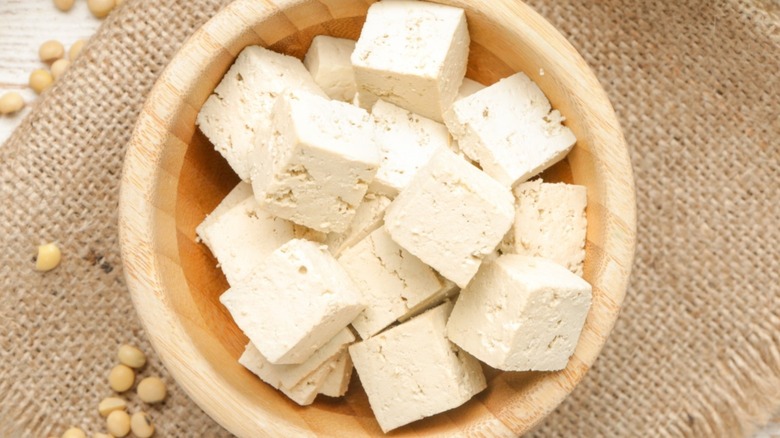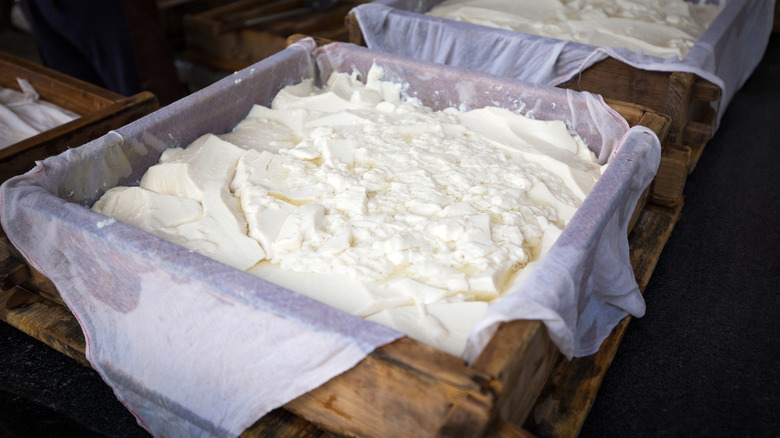The Subtle Difference Between Japanese And Chinese Tofu
Types of tofu range from silken to extra firm and categories in between, and these varieties adhere to Chinese and Japanese standards depending on where they're made. But how are these standards different?
All tofu is packed with minerals, vitamins, and proteins. This soy-based superfood is said to have far-reaching health benefits in that it is rich with antioxidants, helps manage blood sugar, and may even dilute the symptoms of menopause, among other things, per BBC Good Food. The somewhat dark side to this food, however, is that it contains antinutrients (phytates and trypsin inhibitors) that can impede the body's capacity to absorb and digest nutrients, per Healthline. Still, due to tofu's widespread benefits and uses in the kitchen, it's an increasingly popular ingredient in Western kitchens. The Washington Post reports that Americans are cooking with tofu much more these days, with sales of the ingredient rising by 40% from 2019 to 2020. If you're looking to stock up, here's how to tell the general difference between key varieties from China and Japan.
There are different ways to make tofu
The tofu-making process entails soaking, crushing, and boiling dried soybeans, per Britannica. This method leaves behind a combination of soya milk and pulp, the latter of which is removed. The next part of the process, the coagulation of the milk, is what defines the texture of the finished product, as different ingredients can be used to separate the curds from the whey.
According to food blog Messy Vegan Cook, Japanese and Chinese tofu can generally be distinguished based on differences in their consistency. Typically, she says, the firmer, less moist types of tofu that fry up easily hail from China, while Japan is responsible for the wetter and softer variants that are better suited for raw consumption. One reason behind these differences are the countries' choice of coagulants. While Chinese producers generally use gypsum, or calcium sulfate, the Japanese opt for nigari, which is the liquid left in seawater after extracting the salt. The blogger clarifies that this is just a general difference between Chinese and Japanese tofu, as both cultures are responsible for a host of tofu products.

